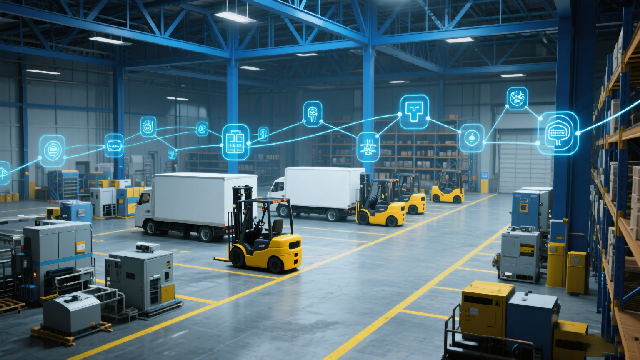Making Wireless IoT Project Easy, Smart, Secure.
GET A FREE SAMPLEEvery year, businesses lose billions due to misplaced, stolen, or poorly managed assets. From shipping containers vanishing in transit to hospital equipment disappearing within facilities, the lack of real-time visibility leads to inefficiencies, financial losses, and operational delays.
In today’s fast-paced, data-driven world, knowing the location and status of your assets isn’t just a convenience—it’s a necessity.Enter IoT-powered asset tracking—a game-changing solution that transforms how businesses monitor, manage, and optimize their physical assets. By leveraging GPS, RFID, BLE, UWB, and AI-driven analytics, companies can now track assets with unprecedented accuracy, reducing loss and improving efficiency.

How IoT Asset Tracking Works
IoT asset tracking systems integrate smart sensors, GPS, RFID tags, and cloud connectivity to provide real-time visibility into the location, condition, and usage of assets. These systems automate data collection and analytics, reducing human error and enabling instant decision-making.
Smart Sensors & Tags
Connectivity Networks
Data Analytics & AI
Industry-Specific Applications
Logistics & Transportation: Track cargo in real time across the globe. Monitor for delays, optimize routes, and ensure delivery compliance.
Healthcare: Locate critical equipment quickly in large facilities and monitor usage to reduce downtime.
Construction: Keep tabs on high-value machinery and tools, reducing theft and improving project timelines.
Retail: Monitor inventory in transit and in-store to streamline supply chains and prevent stockouts.
Asset misplacement and loss cost companies billions annually. Manual tracking methods, spreadsheets, and barcode scans often lead to outdated or incomplete information. For industries like logistics, manufacturing, healthcare, and construction, not knowing where an asset is—or whether it’s being used efficiently—can halt productivity and inflate operational costs.
As IoT devices become more energy-efficient, affordable, and widely adopted, the potential for smarter asset tracking will only grow. Integration with AI, blockchain for secure tracking histories, and 5G for faster data transmission will push the boundaries even further.
IoT asset tracking is no longer optional—it’s a competitive necessity. Companies that adopt these technologies reduce losses, boost efficiency, and gain real-time operational insights.The question isn’t if you should implement IoT tracking—it’s how soon you can start.Ready to transform your asset management? Explore the right IoT solution for your business today.
Prev:Bluetooth/UWB-Powered Psychiatric Patient Tracking
Next:Intelligent Elderly Care System Upgraded:VDB03 Bluetooth
Copyrights© Shenzhen Skylab Co.,LTD All Rights Reserved.

